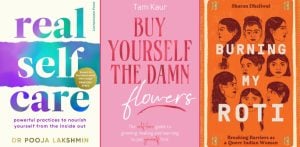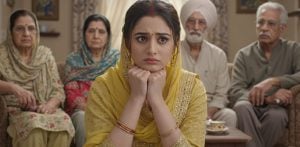"This is not solidarity. This is theft. This is erasure.”
Aamir Aziz’s viral protest poem Sab Yaad Rakha Jayega has become the focus of a new controversy over artistic ethics, ownership and consent.
The Indian poet has accused renowned conceptual artist Anita Dube of using lines from his poem in her recent solo exhibition at the Vadehra Art Gallery in Delhi without his permission, credit or compensation.
Aziz said he learned of the alleged appropriation on March 18 when a friend recognised his words stitched into one of Dube’s works on display.
He posted: “That was the first time I learned Anita Dube had taken my poem and turned it into her art.
“When I confronted her, she made it seem normal, like lifting a living poet’s work, branding it into her own and selling it in elite galleries for lakhs of rupees was normal.”
Aamir Aziz first performed the poem during protests against the Citizenship Amendment Act (CAA) and the proposed National Register of Citizens.
Sab Yaad Rakha Jayega echoed from placards at Shaheen Bagh to a speech by Roger Waters of Pink Floyd at a rally in London.
Aziz now says that same poem was displayed on velvet, carved into wood and renamed in Dube’s commercial exhibition, all without his knowledge.
He wrote: “Let’s be clear: if someone holds my poem on a placard at a protest, I stand with them. But this is not that.
“This is my poem, written in velvet cloth, carved in wood, hung in a commercial white cube, renamed, rebranded, and resold at an enormous price without telling me.
“This is not solidarity. This is theft. This is erasure.”
He also alleged that one of Dube’s works was retitled after his legal team sent her a notice.
He claimed this was not the first time Dube had profited from his writing, pointing to another 2023 work that allegedly drew on the same poem without permission.
Admitting to what she called “an ethical lapse”, Dube said:
“As a visual artist, I work with materials that I love, that become means to critically comment, and the intent of quoting words from Aamir Aziz’s poem was to celebrate them.
“I realise that I made an ethical lapse in only giving credit but not checking with Aamir before using words from his poem.
“However, I reached out and called him, apologised and offered to correct this by remuneration.
“Aamir instead chose to send a legal notice, and then I had to go to a lawyer as well.”
On the issue of monetisation, Dube said she had “immediately put the works not for sale” and hoped for a “fair manner” of resolution.
Aziz disputed this, stating the credit was not clearly visible and calling Dube’s actions exploitative.
View this post on Instagram
The Vadehra Art Gallery, which hosted Dube’s show, said it had been in contact with Aziz and his team for over a month.
The gallery said in a statement: “This is a situation that we have taken very seriously.
“We immediately ensured that the works Aamir Aziz has concerns with were not offered for sale.
“We hope that the discussions that are ongoing between Aamir Aziz and Anita Dube can be resolved in an amicable and constructive manner.”
Gallery director Roshini Vadehra added that credit had been “given in the artwork captions” and said a wall text thanking Aamir Aziz was added once he raised concerns.
She claimed the artwork titled After Aamir Aziz had carried that name from the beginning.
Vadehra admitted to a procedural failing.
“This was a lapse in this case. Hopefully a fair and amicable resolution will be reached.”
The controversy has sparked a broader debate in India’s art world around consent, commodification and the politics of representation.
Alka Pande, curator at Delhi’s Visual Arts Gallery, said:
“A politically aware and conscious artist like Anita should have been sensitive to the ethics of copyright.
“Borrowing or collaborating, particularly when working with a private gallery where the works are available for sale, deepen the gravity of ethical issues involved. This should not be taken lightly.
“I am glad Aamir Aziz raised his voice and made Anita acknowledge her unethical lapse.
“I sincerely hope this episode will lead to greater caution amongst the visual artist community as there is in the literary world, to copyright issues.”





























































